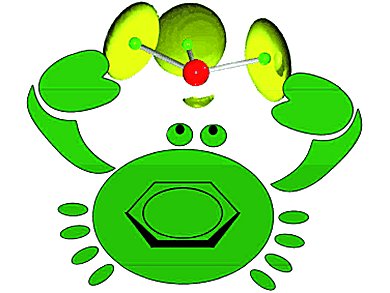In addition to hydrogen bonding and π–π stacking, two types of interactions involving aromatic systems have been recently recognized as strong noncovalent binding forces in supramolecular chemistry. These are the interactions of a π cloud with an electron lone pair (lp) contributed by a neutral or an anionic moiety (lp–π interactions) and cation–π interactions where the cation is an alkali metal or an alkali-earth metal, but may be any onium ion. Both have great implications for small organic molecules and biological macromolecules.
With the aromatic fragment acting as an acceptor of electron density in one case and its donor in the other, these interactions can nevertheless coexist and even enhance each other when present in the same system.
Konstantin A. Lyssenko, Russian Academy of Sciences, Moscow, and colleagues, found a novel type of supramolecular interaction, with the two “antagonistic” binding models cation–π and lone pair–π fused into one in a crystal of bis(oxonium) 4-hydroxy-1,3-benzenedisulfonate. They used a topological analysis of the electron-density distribution derived from high-resolution X-ray diffraction data for this first experimental evidence of (H3O-lp)+···π-system binding in a crystal.
- Cation–π and Lone Pair–π Interactions Combined in One: The First Experimental Evidence of (H3O-lp)+···π-System Binding in a Crystal,
Yulia V. Nelyubina, Petro Yu. Barzilovich, Mikhail Yu. Antipin, Sergei M. Aldoshin, Konstantin A. Lyssenko,
ChemPhysChem 2011, 12, 2895–2898.
DOI: 10.1002/cphc.201100294




